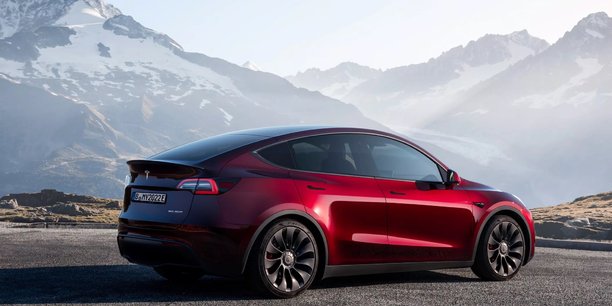It lasted three years. Three years during which the American manufacturer General Motors, the Canadian equipment manufacturer Magna as well as Wipro, an Indian company specializing in IT consulting, thought up and designed a unique platform: a marketplace, called SDVerse, which showcases automotive software developed by manufacturers, equipment manufacturers or any other tech player. A sort of “Tinder” of software, summarizes one source.
“ To maintain confidentiality, we will present the name of the modules, but without visible code and the contact with customers will be done outside the platform », specifies Derek De Bono, in charge of software at Valeo.
Alongside Valeo, which has announced that it will integrate this platform, Forvia, Renault and its subsidiary Ampere will also be there. This is the first time that such a marketplace has been developed in the world. It should definitely see the light of day at the end of September 2024. Until then, other players are under discussion, such as Stellantis.
“ Switch from an old Nokia 6510 to an iPhone »
The objective of this project? Give a boost to “ Software defined vehicles » (SDV), pioneered by Tesla. This new vehicle architecture allows many of the car's functionalities to be updated remotely, such as braking, steering, lighting and even multimedia, throughout the life of the vehicle.
For example, Tesla recently made an update that improves electric charging in extreme cold. So, rather than having a hundred processors that individually control each feature of the car and needing to be repaired manually, the vehicle will be equipped with a single large computer capable of controlling everything remotely.
A revolution in the automotive industry. As a result, it attracts many manufacturers, eager to compete with Elon Musk's company. Renault thus detailed its development of SDV almost a year ago, before implementation in electric utility vehicles and in Alpine in 2026, then gradually to the rest of the portfolio.
“If we make a comparison with the mobile phone, it amounts to going from an old Nokia 6510 to an iPhone”says Luca de Meo, the director of Renault.
According to him, the SDV will allow “ an improvement in traffic, a reduction in energy consumption, but also fewer deaths on the roads”.
For the moment, several traditional manufacturers have embarked on this race for centralized software. If Renault chooses to cooperate with other players on the subject, such as Qualcomm or Google and to integrate this platform to develop new features more quickly, certain German manufacturers have preferred to play the solo card. This is the case for Volkswagen, which develops all of its architecture internally, available in its vehicles in… 2028.
Software will represent 100 billion dollars in 2030
By then, many vehicles could already be equipped with this system. Because in China, “ hidden components are common to constructors “, underlined Luca de Meo. A sharing of knowledge which gives them a considerable lead over the rest of the world.
And it is this competition that motivated General Motors and others to create this unique marketplace. Behind this war, there is an enormous financial and survival issue at stake. According to sector specialists, the global software market will represent 100 billion dollars in 2030 and 40% of the value of a vehicle in 2030. Above all, China has already had the advantage in electric technology for several years. If, however, it took over the software as well, then almost the entire value of a car would be concentrated on its territory.
Despite this threat, the marketplace does not seem to exclude Chinese manufacturers and equipment suppliers who would like to present their advances.
The difficulty of integrating Chinese players
“The idea is rather to bring together a large number of actors. If we do not welcome Chinese manufacturers, we will deprive ourselves of access to certain blocks of software,” explained Eric Kirstetter, partner at the Roland Berger firm, which contributed to the project.
Above all, the equipment manufacturers present on the platform will certainly want to sell their software to as many manufacturers as possible and, in fact, to Chinese manufacturers. “The ambition is to make more sales, that’s the whole point of this marketplace”confirms Derek De Bono.
If no exclusion was mentioned, the restriction of access to certain blocks of software is currently under discussion. “ Some participants asked to limit access to their software by certain competitors. Everyone will be able to enter this marketplace, but not everyone will see everything that happens there. said Eric Kirstetter. The outlines of what will or will not be displayed on the platform and the terms of access should be presented this summer.
Washington at war with Beijing
But this project risks raising teeth on the political side. At the end of February, the United States announced that it was launching a vast investigation to determine the risks associated with the circulation of connected vehicles from China on its territory. US President Joe Biden also signed an executive order aimed at “ prevent the large-scale transfer of Americans' personal data to sensitive countries “. Commerce Secretary Gina Raimonda added that it was necessary to have “ a clear idea of the potential national security risks associated with connected vehicles “. In response, China considered that this investigation was “ discriminatory » and that she “firmly opposed the generalization made by the United States of the concept of national security”.
This instruction does not only target Chinese manufacturers, but also all brands that could integrate Chinese software. An initiative which could discourage European and American manufacturers from bringing these manufacturers into the software sharing platform.

